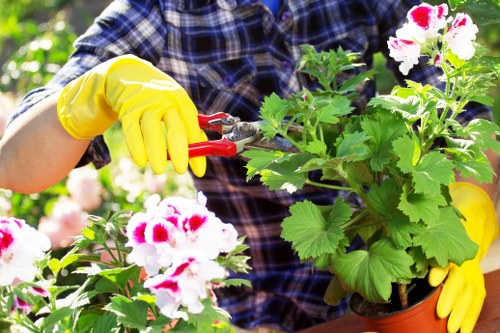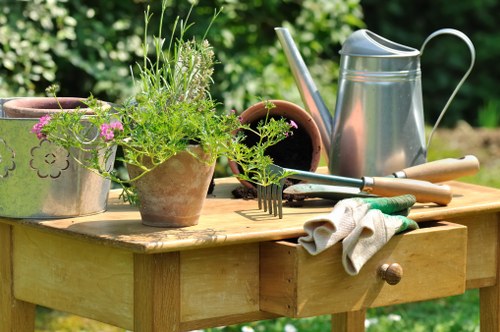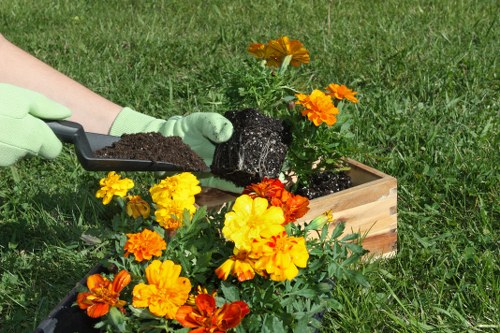Mastering Hedge Trimming: Techniques and Benefits
Introduction to Hedge Trimming

Hedge trimming is a fundamental aspect of garden maintenance, playing a crucial role in enhancing the aesthetic appeal and health of your landscape. Whether you’re a seasoned gardener or a homeowner looking to spruce up your outdoor space, understanding the nuances of hedge trimming can make a significant difference.
Properly trimmed hedges not only frame your garden beautifully but also promote the growth and longevity of the plants. In this article, we will delve into the various techniques, tools, and benefits of hedge trimming, ensuring your hedges remain vibrant and well-maintained all year round.
From selecting the right tools to mastering different trimming styles, this comprehensive guide covers everything you need to know about hedge trimming. Let’s explore the essentials that will help you achieve professional-looking results with ease.
Essential Tools for Hedge Trimming

Having the right tools is paramount for effective hedge trimming. The tools you choose can influence the precision, ease, and overall outcome of your trimming efforts.
1. Hedge Trimmers: Available in manual and electric varieties, hedge trimmers are indispensable for achieving clean and uniform cuts. Electric trimmers are ideal for smaller hedges, while gas-powered models are better suited for larger, denser hedges.
2. Pruning Shears: For more intricate work, pruning shears allow for detailed trimming and shaping. They are perfect for hard-to-reach areas and finishing touches.
- Manual Hedge Trimmers
- Electric Hedge Trimmers
- Gas-Powered Hedge Trimmers
- Pruning Shears
- Loppers
Investing in high-quality tools ensures longevity and better performance, making your hedge trimming tasks more efficient and less time-consuming.
Techniques for Effective Hedge Trimming

Mastering the right techniques is essential for maintaining the shape and health of your hedges. Here are some key methods to consider:
- Regular Maintenance Trims: Conducting frequent trims promotes dense growth and prevents your hedges from becoming overgrown.
- Shaping: Decide on the desired shape of your hedge—whether it’s formal, rounded, or natural—and trim accordingly to achieve a consistent appearance.
- Height Control: Keeping your hedges at a manageable height ensures they remain healthy and easier to maintain.
- Thinning: Removing excess foliage improves air circulation and reduces the risk of disease.
Proper technique not only enhances the visual appeal but also contributes to the overall health of your hedges, ensuring they thrive season after season.
Benefits of Regular Hedge Trimming

Regular hedge trimming offers numerous advantages beyond just an attractive garden. Let’s explore some of the key benefits:
- Promotes Healthy Growth: Trimming encourages new shoots and prevents the buildup of dead or diseased branches.
- Enhances Curb Appeal: Well-maintained hedges make your property look neat and inviting.
- Increases Sunlight Exposure: Thinning out dense hedges allows more sunlight to reach the ground, benefiting other plants in your garden.
- Improves Safety: Keeping hedges trimmed reduces the risk of branches encroaching on walkways or structures.
By incorporating regular hedge trimming into your garden maintenance routine, you can enjoy a healthier, more beautiful outdoor space.
Choosing the Right Time for Hedge Trimming

Timing is crucial when it comes to hedge trimming. Trimming at the wrong time can stress the plants and inhibit growth. Here are some guidelines to help you decide the best time for trimming:
Spring: Early spring is ideal for most hedges, allowing new growth to develop during the growing season.
Summer: Light trimming can be done to maintain shape, but avoid heavy cuts as they can stress the plants in the heat.
Autumn: Late autumn trimming prepares hedges for winter, but ensure there’s enough time for cuts to heal before the cold sets in.
- Consider the specific needs of your hedge species
- Avoid trimming during extreme weather conditions
- Monitor growth cycles to determine optimal trimming times
Understanding the growth patterns and requirements of your hedges ensures that your trimming efforts yield the best results.
Advanced Hedge Trimming Techniques

For those looking to take their hedge trimming skills to the next level, advanced techniques can help create stunning garden features:
1. Topiary
Topiary involves shaping hedges into intricate designs such as animals, geometric shapes, or abstract forms. This requires precision and regular maintenance to maintain the desired shape.
2. Layered Trimming
Layered trimming creates a cascading effect, adding depth and dimension to your hedges. It’s particularly effective for larger hedges, giving them a more dynamic appearance.
Steps to Achieve Layered Trimming:
- Identify the focal point of your hedge.
- Trim the top layers first, gradually working your way down.
- Ensure each layer blends seamlessly with the one below.
Maintaining Consistency
Consistency is key to advanced trimming techniques. Regular upkeep ensures that your creative designs remain sharp and well-defined throughout the seasons.
Common Mistakes to Avoid
Even experienced gardeners can make mistakes when trimming hedges. Avoid these common pitfalls to ensure your hedges remain healthy and beautifully shaped:
- Over-Trimming: Cutting too much can stress the plant and slow down growth.
- Poor Timing: Trimming at the wrong time of year can disrupt the natural growth cycle.
- Using Dull Tools: Dull blades can cause jagged cuts, leading to disease and poor plant health.
- Ignoring Plant Health: Trimming a diseased or infested hedge without addressing the underlying issue can worsen the situation.
By being mindful of these mistakes, you can maintain the integrity and beauty of your hedges effectively.
Hedge Trimming Tips from the Experts
Expert tips can significantly enhance your hedge trimming skills. Here are some valuable insights from gardening professionals:
- Plan Your Trim: Visualize the desired shape before you start trimming to ensure a cohesive look.
- Use the Right Tools: Invest in high-quality tools and keep them well-maintained for optimal performance.
- Trim Gradually: Make small cuts over time rather than attempting to achieve the perfect shape in one go.
- Monitor Plant Health: Regularly check your hedges for signs of disease or pests and address issues promptly.
Implementing these expert tips can lead to more efficient and effective hedge trimming, resulting in a stunning garden landscape.
Environmental Considerations
Hedge trimming can have environmental impacts, both positive and negative. Here’s how to ensure your trimming practices are eco-friendly:
- Use Sustainable Tools: Opt for electric or manual trimmers to reduce carbon emissions associated with gas-powered tools.
- Recycle Clippings: Compost trimmed branches and leaves to create nutrient-rich soil for your garden.
- Choose Native Plants: Native hedges are better suited to your local climate and require less water and maintenance.
- Minimize Waste: Trim only what’s necessary to maintain plant health and aesthetics, reducing unnecessary waste.
By considering the environmental impact of your hedge trimming practices, you contribute to a healthier, more sustainable garden ecosystem.
Seasonal Hedge Trimming Guide
Adapting your hedge trimming routine to the changing seasons ensures that your hedges remain healthy and attractive throughout the year. Here’s a seasonal guide to help you:
Spring
Spring is the optimal time for a major trim. Remove any winter damage and shape your hedges to prepare them for vigorous growth during the warmer months.
Summer
Perform light trimming to maintain the shape and remove any stray branches that may impede airflow. This helps prevent disease and promotes dense growth.
Autumn
Conduct a final trim to tidy up your hedges before winter. Focus on removing any dead or diseased branches and shaping the hedges to withstand cold weather.
Winter
Avoid heavy trimming during winter. However, you can do some light maintenance if necessary, ensuring you don’t damage the plants during their dormant period.
Hiring Professional Hedge Trimming Services
While DIY trimming can be rewarding, there are times when hiring professionals is the better choice. Here are some benefits of opting for professional hedge trimming services:
- Expertise: Professionals have the knowledge and skills to trim hedges efficiently and effectively.
- Time-Saving: Hiring a service frees up your time, allowing you to focus on other tasks or simply enjoy your garden.
- Safety: Professionals are equipped to handle large or difficult-to-reach hedges safely.
- Quality Results: Ensure a polished and uniform look with the expertise of trained gardeners.
If you’re unsure about tackling hedge trimming on your own, don’t hesitate to contact us today for professional services that guarantee outstanding results.
Conclusion
Hedge trimming is an essential practice for maintaining the beauty and health of your garden. By understanding the right tools, techniques, and timing, you can achieve stunning results that enhance your outdoor space.
Whether you choose to undertake the task yourself or hire professional services, consistent maintenance is key to ensuring your hedges remain lush and vibrant throughout the year.
Ready to transform your garden? Book your service now and enjoy the benefits of expertly trimmed hedges that elevate the charm of your home.